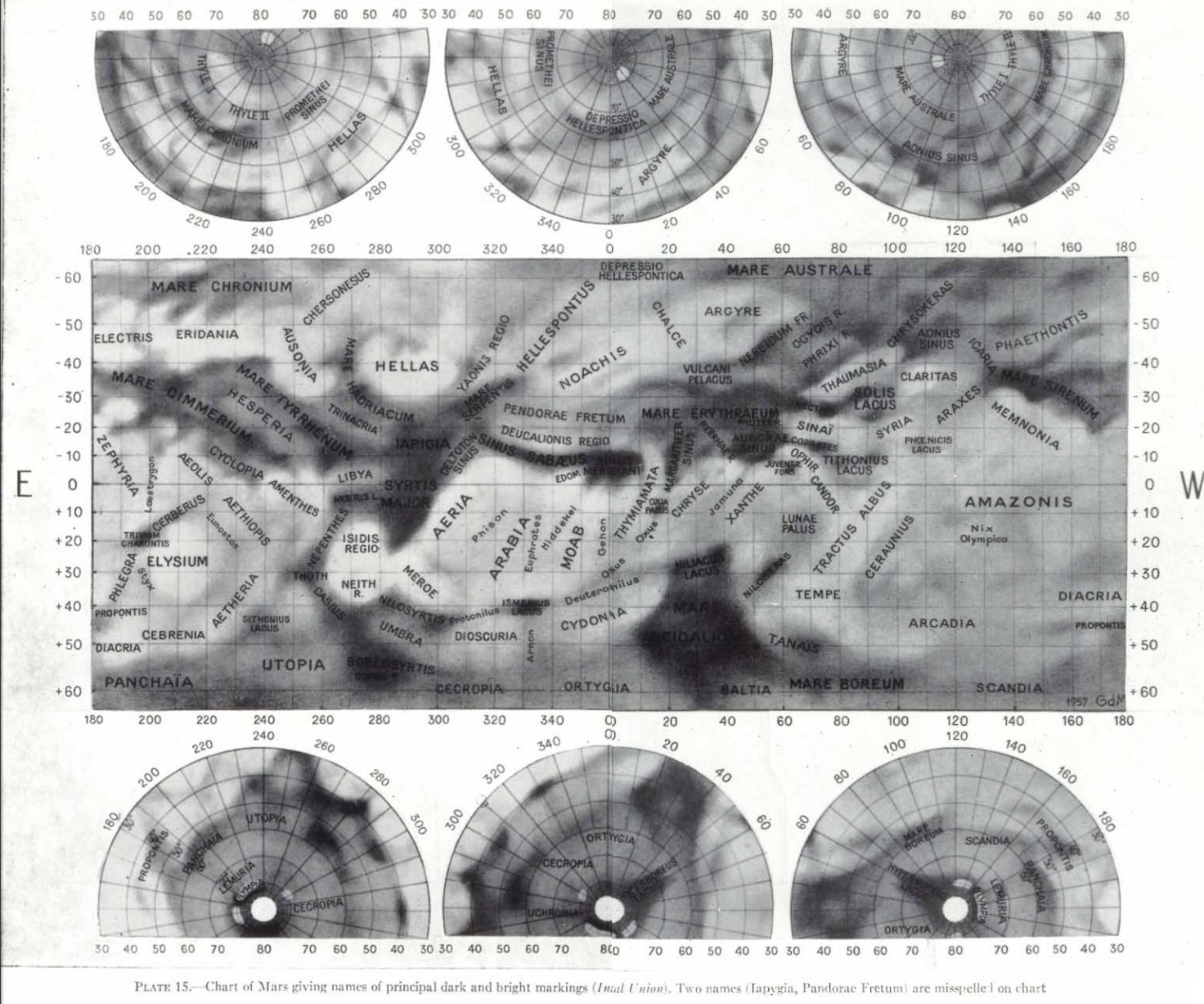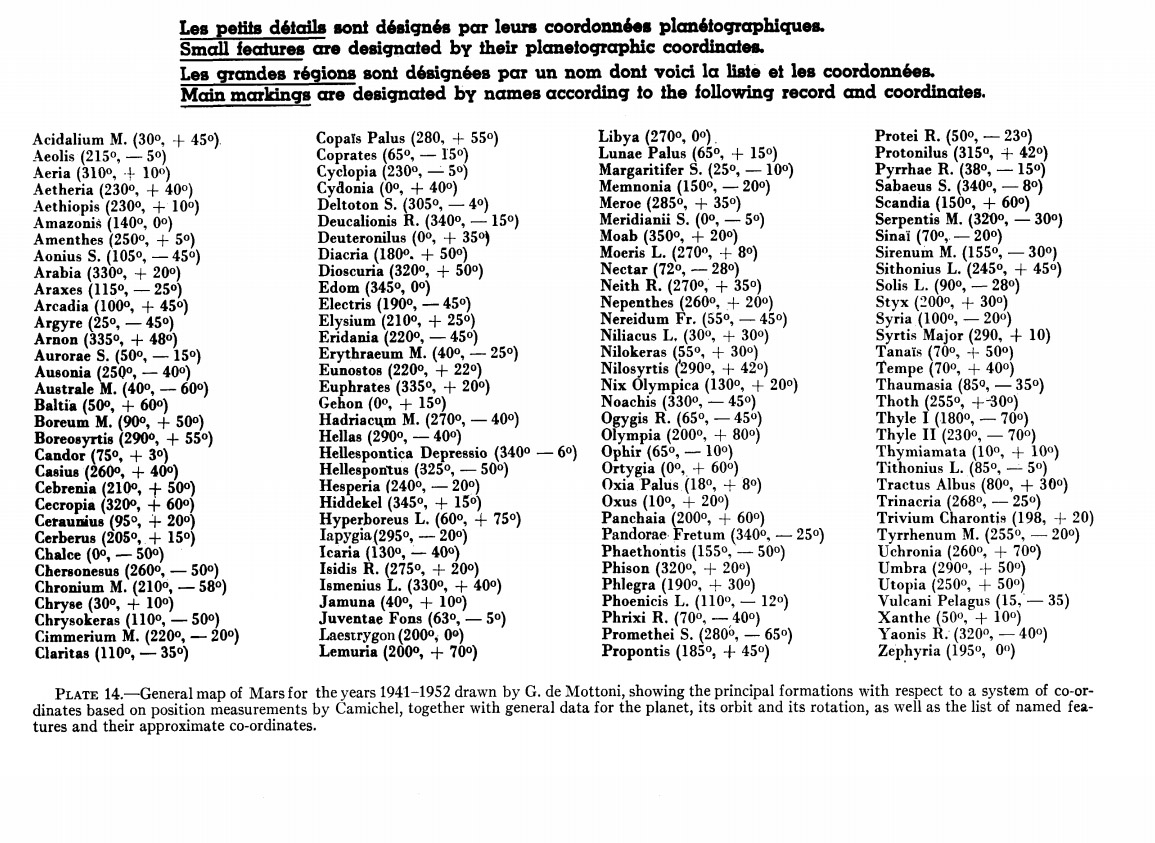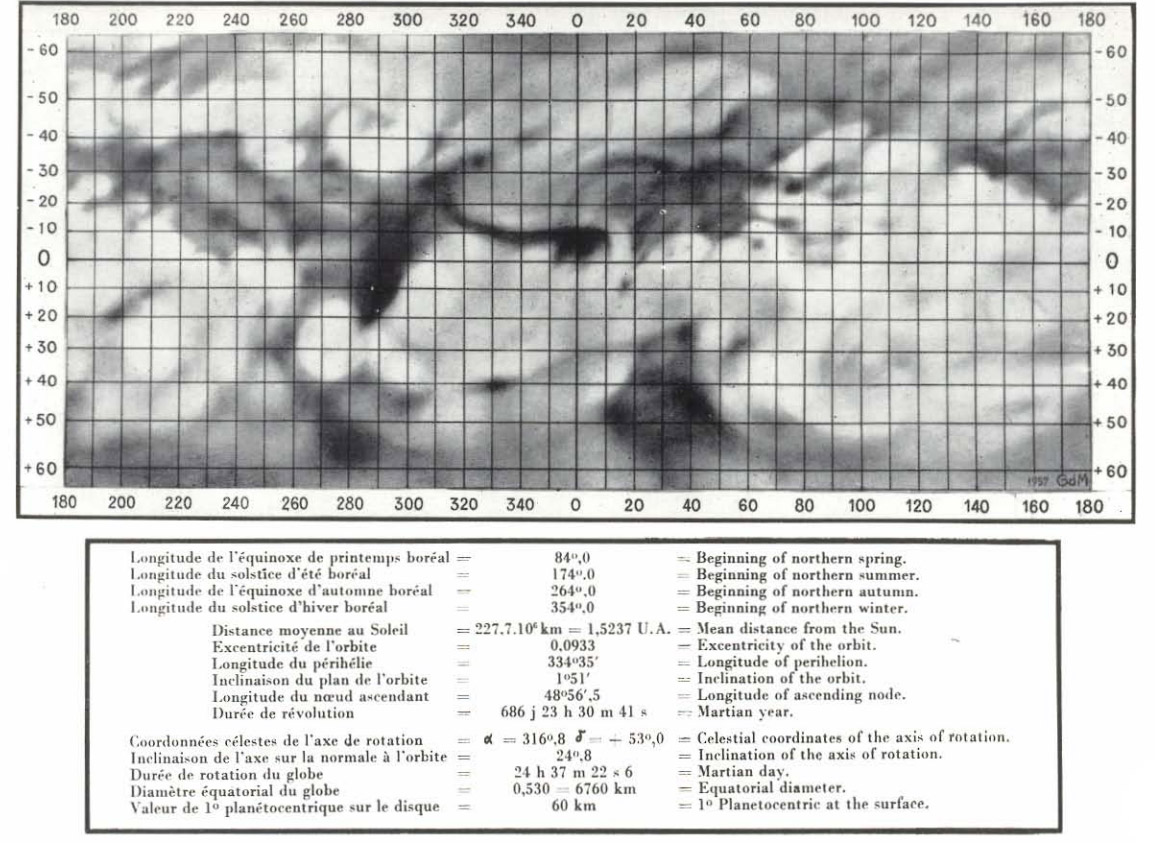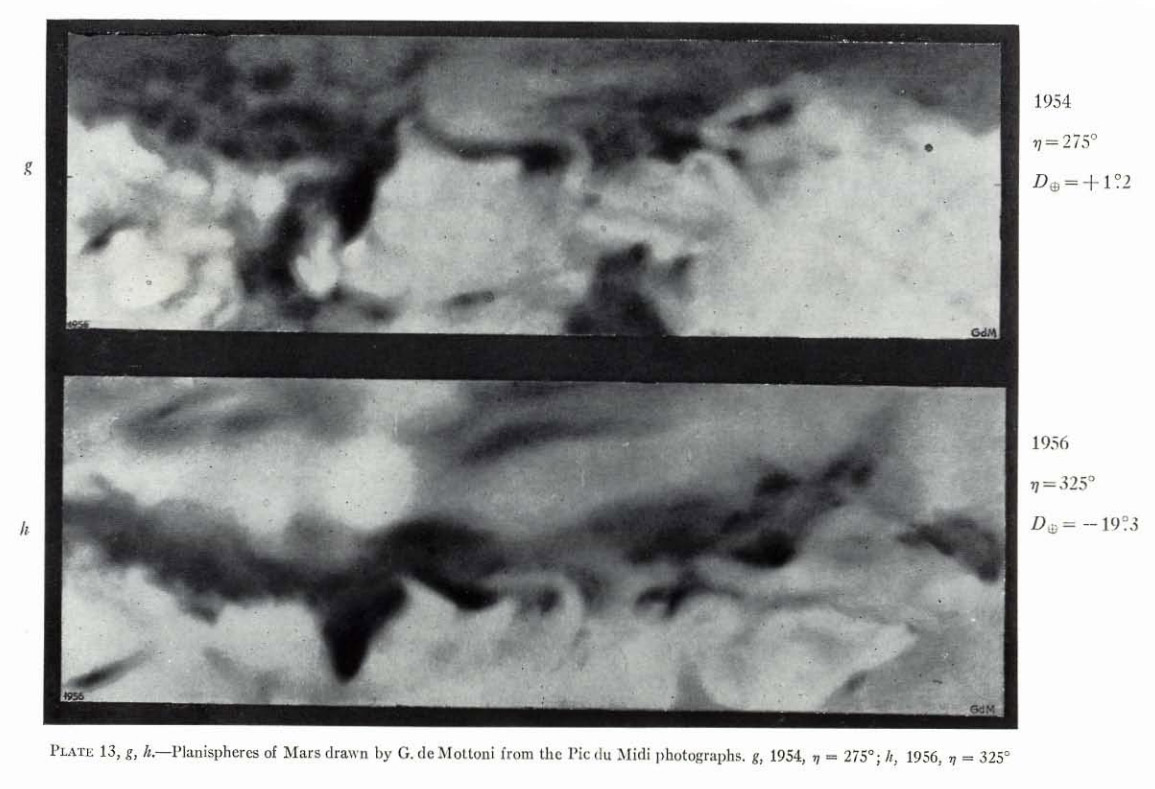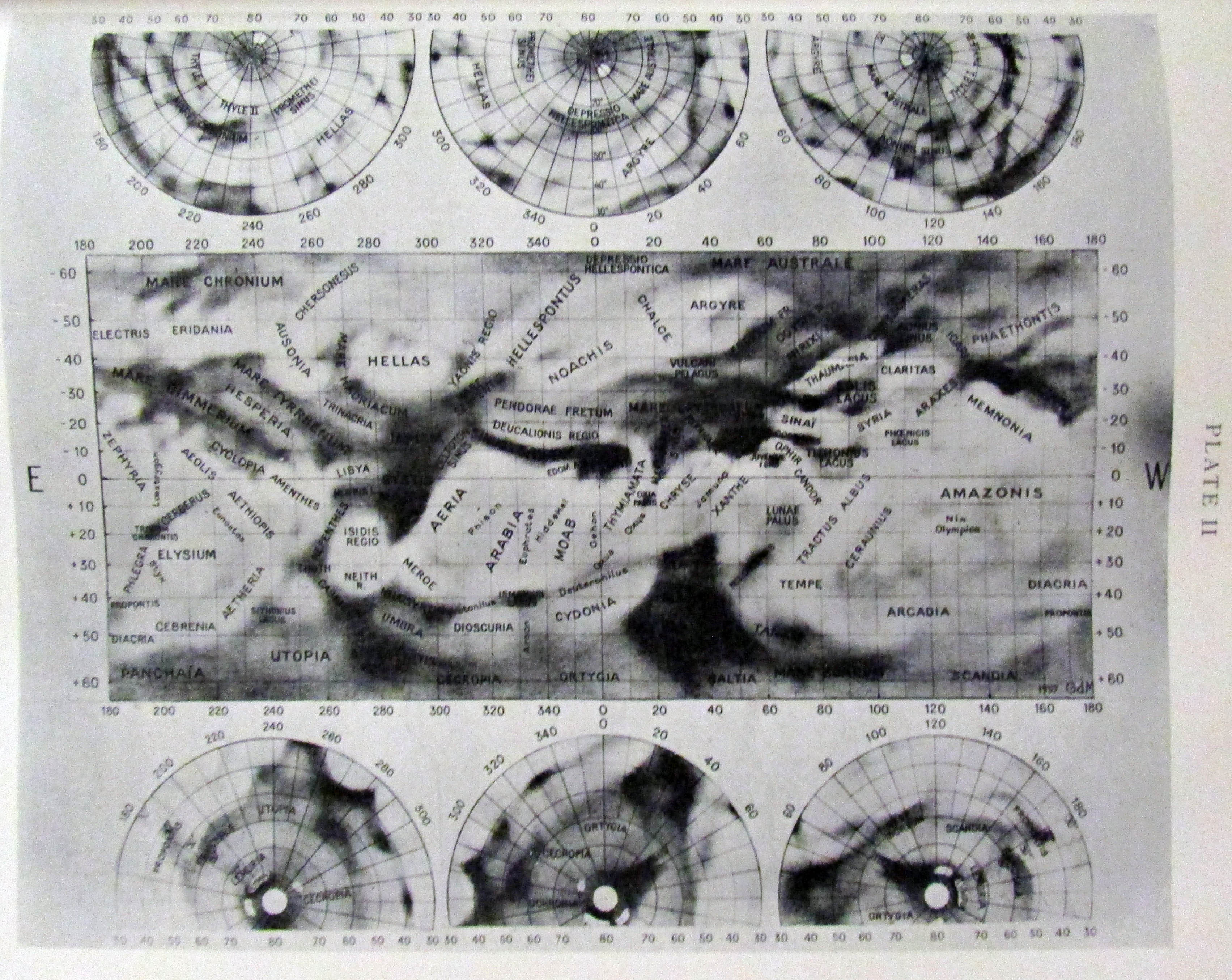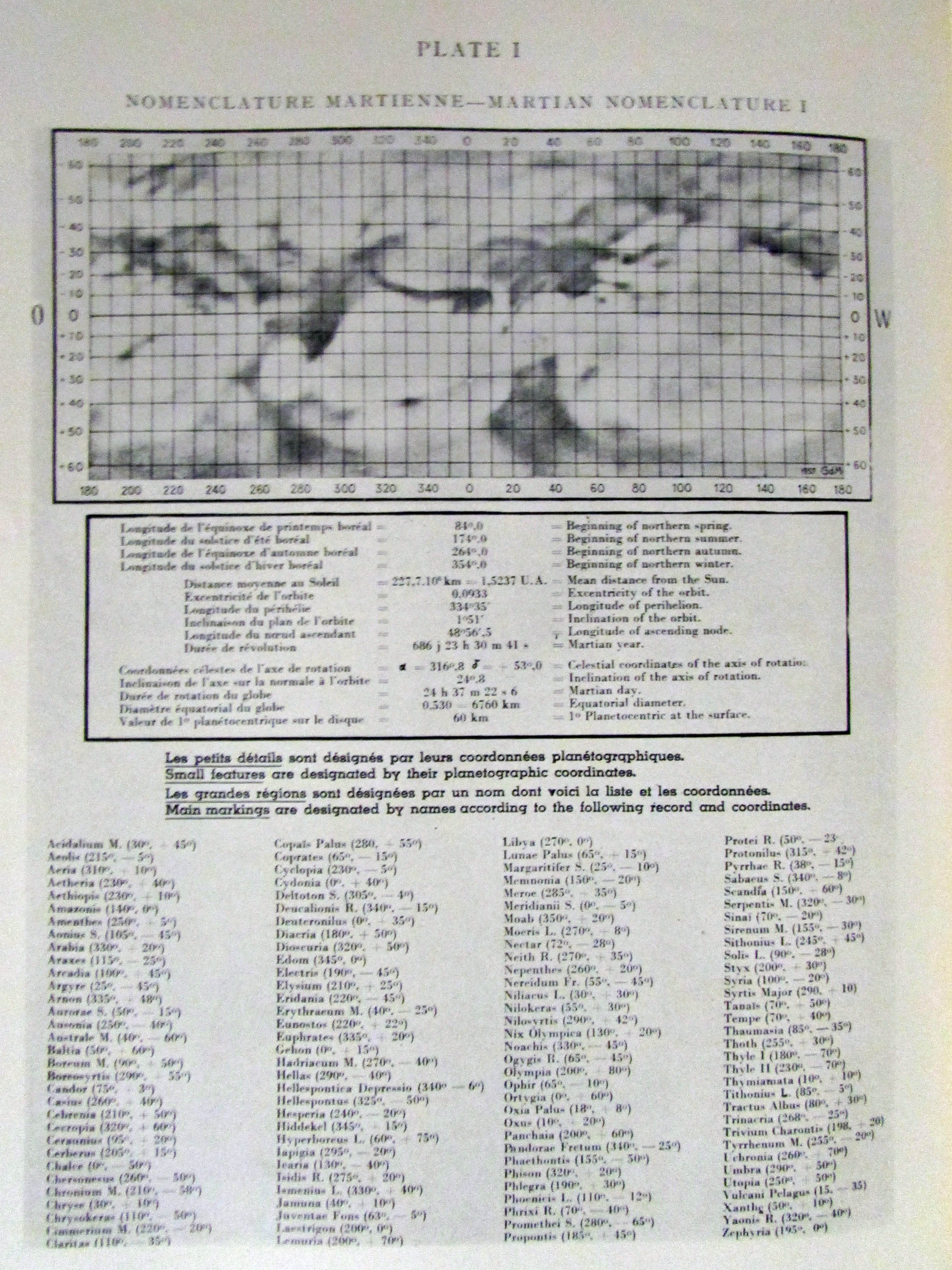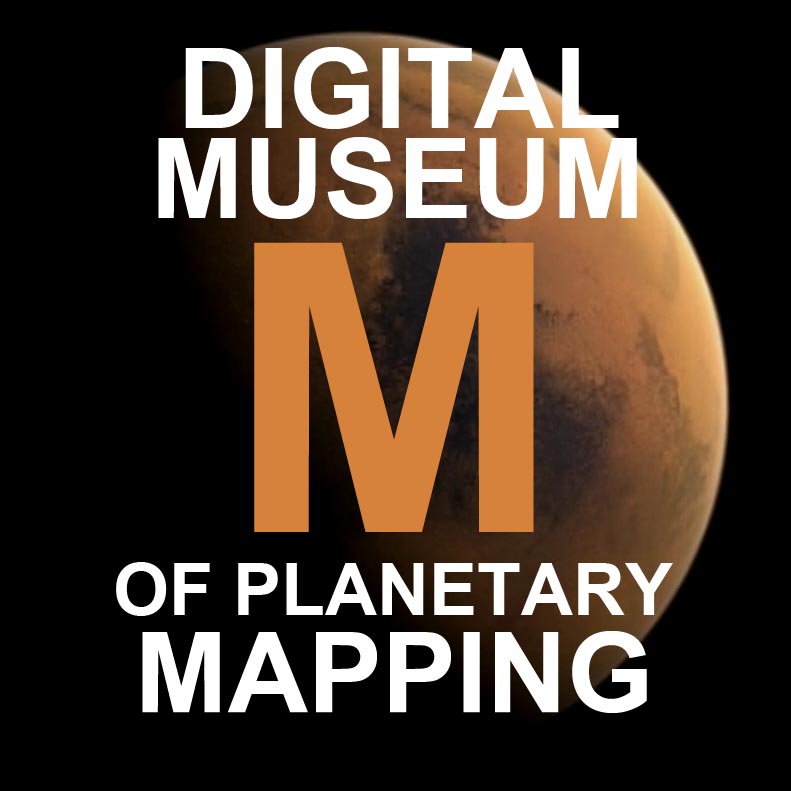Mottoni’s IAU Map of Mars (1941-52)
Coordinate system created using Juventae Fons observations for determinig rotation and 260 control points by Camichel. 40 was used in this map.
This map was made by Dr. de Mottoni (Giardini Glauco de Mottoni y Palacios), and presented at the 1958 Moscow IAU meeting. It represents the avegare positions of surface markings observed 1941-52.
Source: A. Dollfus: Visual and photographic studies off planets at the Pic du Midi. In: Planets and Satellites, GP Kuiper and B Middlehurst, eds. Chicago Univ Press 543-571.
* *
IAU adapted this map as the only officially approved Martian albedo nomenclature still in effect.
From the Transcations:
“CHARTS OF THE PLANET MARS
The two accompanying charts (I and II) are intended to provide a simple method of designating and identifying spots on the surface of the planet Mars. The system, adopted and recommended by the Intemational Astronomical Union, is in conformity with that used since the last century, but it is simplified and adapted to present-day requirements.
Method of designation Main features are designated each by a name drawn from mythology, in accordance with the former classical system. Each name refers to the whole of a district; it indicates the locality on which observa-tions or spectroscopic, photometric, radiometric, polarimetric or other measures have been carried out. Small features are designated by their planetocentric coordinates mad off from the charts. These charts are accurate enough to determine present-day co-ordinates; they provide an absolute standard of reference. The co-ordinates are expressed by the longitude, followed by the latitude, between brackets—for example: (039°, — 20°) ; (22°, 281. However small and numerous may be the details revealed by powerful instruments of observation, this system of reference will enable them to be located, even though many of them may be ephemeral or variable.
His to use the charts To designate a spot seen on the planet, the observer should examine the region on the chart containing names (Plate II), and should read off the name or the co-ordinates. To find a named feature, he should consult the alphabetical list (which is below the chart without names (Plate I)) for the co-ordinates, which will enable the position of the feature to be found on the chart. ”
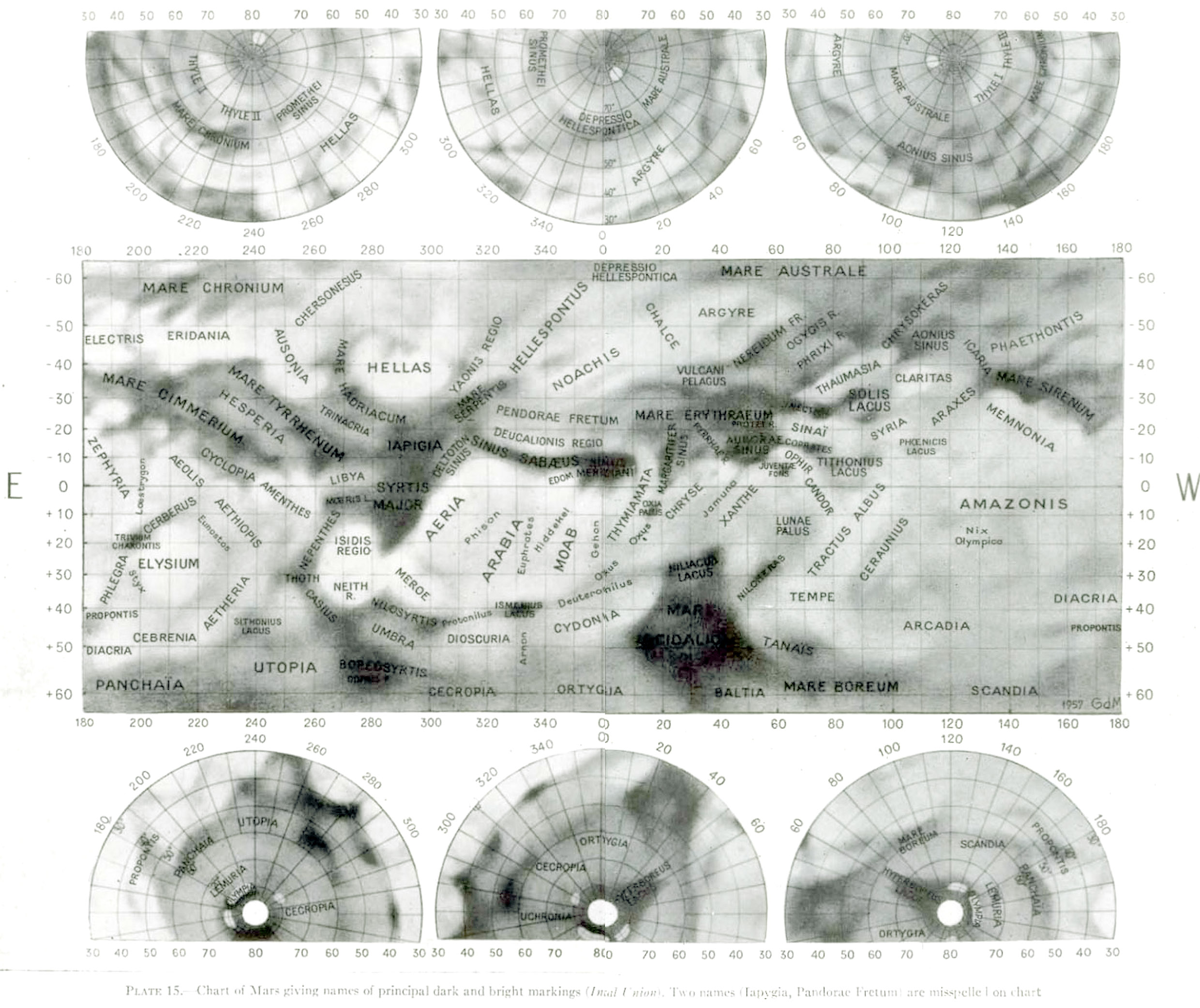
Two of the original drawings, using control points
Measurements made at Pic du Midi 1941-54 by H. Camichel. Of 260 control points, 38 were used in the map.
The map was produced from six “planisphere” maps by G. de Mottoni with the help of Pic du Midi photographs taken during 1941, 43, 46, 48, 50, 52 oppositions, respectively.
+60- -60 latitudes in Mercator, following Schiaparelly, and polar azimuthal equidistant projection.
Source: Transactions of the International Astronomical Union, Moscow, August 12-20, 1958: Cambridge University Press, v. 10, pl. 1, p. 262.

